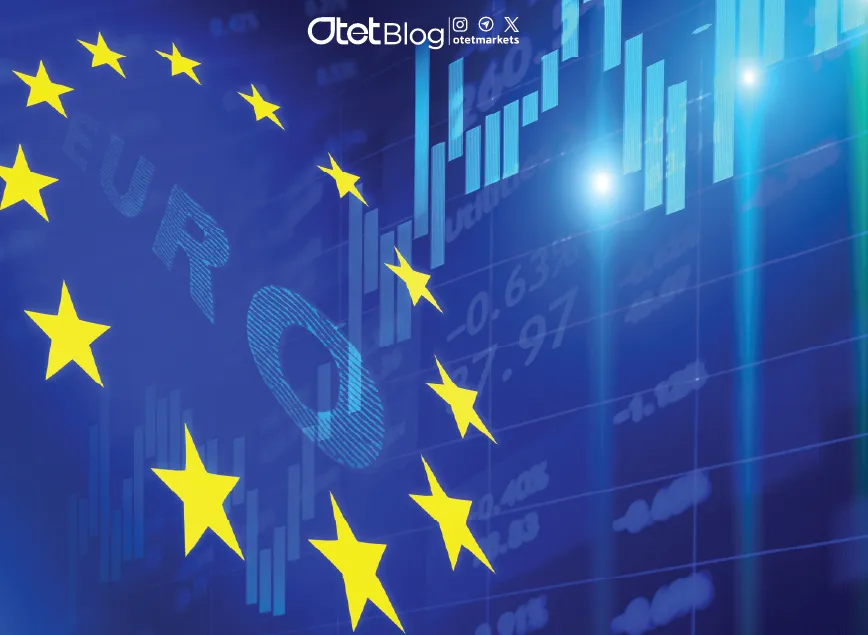
A Comprehensive Guide to Investing in European Stocks
Estimated reading time: 6 minutes
Table of contents
- Key Stock Market Indices in Europe
- How to Invest in European Stocks (Euro Stocks)
- Investment Opportunities in European Stocks
- Challenges and Risks of Investing in European Stocks
- Comparing European Stocks with U.S. Stocks
- The Impact of Economic and Financial Policies on European Stocks
- Leading Sectors in the European Stock Market
- How to Analyze and Select the Best European Stocks
- Conclusion
The European stock market is a dynamic and diverse financial hub that plays a crucial role in the global economy. It features multinational companies and major industries across sectors such as technology, banking, automotive, and energy. For investors looking to diversify their portfolios and capitalize on the economic growth in the Eurozone, European stocks (Euro Stocks) present a promising opportunity. In this guide, we will walk you through key indices, investment methods, opportunities, and challenges within the European stock market.
Key Stock Market Indices in Europe
European stock indices serve as benchmarks for evaluating market performance. Here are some of the most important indices you should be aware of when considering European stocks:
Euro Stoxx 50 Index
The Euro Stoxx 50 is one of the leading indices in the Eurozone, comprising 50 major companies from various countries in the region. It reflects the economic performance of the Eurozone and is commonly used by investment funds and ETFs as a benchmark. Notable companies in this index include SAP, LVMH, Total Energies, Siemens, and Adidas.
Euro Stoxx 600 Index
The Euro Stoxx 600 features 600 leading European companies from 17 Eurozone countries, offering greater diversity than the Euro Stoxx 50. This index includes small and medium-sized enterprises, making it a more comprehensive representation of the European market. Companies like Nestlé, Novartis, HSBC, Airbus, and Volkswagen are part of this index.
FTSE 100 Index (London)
The FTSE 100 consists of the 100 largest companies listed on the London Stock Exchange. It provides insights into the economic condition of the UK, featuring companies like HSBC, AstraZeneca, BP, and Unilever.
DAX 40 Index (Germany)
The DAX 40 includes the 40 largest German companies traded on the Frankfurt Stock Exchange. This index showcases major players like BMW, Bayer, Siemens, and Daimler.
CAC 40 Index (France)
The CAC 40 represents 40 large French companies listed on the Paris Stock Exchange. Top companies in this index include LVMH, Airbus, and L’Oréal.
Read More: U.S. Stock Market: A Comprehensive Guide
How to Invest in European Stocks (Euro Stocks)
Investing in European stocks can be done in a variety of ways. Here are the most common methods:
Direct Stock Purchase on European Exchanges
Investors can directly buy stocks of European companies through international brokerage platforms. This method allows for targeted investments in specific companies or sectors within Europe.
Investing Through ETFs (Exchange-Traded Funds)
For those looking for a simple way to invest in European stocks, ETFs are a great option. European stock ETFs track indices like the Euro Stoxx 50, Euro Stoxx 600, or DAX 40, providing investors with exposure to a wide range of companies across the continent.
CFDs and Derivative Trading
For short-term traders, CFDs (Contracts for Difference), futures, and options can be appealing. These financial instruments offer high leverage and the potential for significant profits, though they also come with higher risk.
Mutual Fund Investments
Some mutual funds focus on European markets. These funds are managed by professional fund managers and are typically a good choice for conservative investors looking for a more hands-off approach to investing.
Investment Opportunities in European Stocks
Europe offers numerous investment opportunities for those seeking to diversify their portfolios. Here are some reasons why European stocks are an attractive option:
Stable Economy and Strong Regulatory Framework
The European Union has robust regulatory structures in place to protect investor rights, providing a stable environment for investment. Policies by the European Central Bank (ECB), such as interest rate adjustments and quantitative easing, can also support steady market growth.
Diversification Across Industries and Multinational Companies
European stocks are heavily diversified, including multinational companies with operations in global markets. These companies benefit not only from the European economy but also from the growth of emerging markets.
Attractive Dividend Yields
Many European companies offer attractive dividends, making them appealing to long-term investors looking for passive income.
Read More: Stock Valuation Methods & Key Financial Ratios: A Complete Guide
Challenges and Risks of Investing in European Stocks
While the European stock market presents many opportunities, it also comes with its share of risks. Here are some key challenges investors should consider:
Currency Fluctuations
Fluctuations in the value of the Euro (EUR), British Pound (GBP), and Swiss Franc (CHF) can impact foreign investors’ returns, especially when dealing with currency conversion.
Political and Economic Risks
Geopolitical risks, such as trade wars, political instability, and economic uncertainty, can influence the performance of European markets. Investors should stay informed about political developments that could affect their investments.
Slow Economic Growth in Some Regions
While Europe as a whole has a strong economy, some countries are facing slow economic growth, high debts, and declining productivity. These factors could impact the performance of stocks in those regions.
Comparing European Stocks with U.S. Stocks
When deciding between European and U.S. stocks, it’s important to understand the differences. Here’s a comparison:
| Feature | European Stocks | U.S. Stocks |
|---|---|---|
| Major Indexes | Euro Stoxx 50, DAX, CAC 40 | S&P 500, Dow Jones, NASDAQ |
| Volatility | Moderate | Higher |
| Dividend Yields | Higher | Lower |
| Price Growth | Slower | Faster |
| Industry Diversity | Diverse | Focused on tech & services |
The Impact of Economic and Financial Policies on European Stocks
Role of the European Central Bank (ECB)
The ECB’s monetary policies, including interest rate changes and quantitative easing programs, have a significant impact on European stock markets. These policies influence market liquidity and can help support the growth of stock prices.
Taxation and Trade Policies
Changes in corporate tax rates and government policies in European countries can directly affect the profitability of companies listed on major European indices. Additionally, trade relations between Europe, the U.S., and China can influence stock prices, especially for export-heavy companies.
Read More: How to Invest in Stocks: A Pro Guide to Building Wealth
Leading Sectors in the European Stock Market
Europe boasts several leading industries that have proven to be lucrative for investors. Here’s a look at some of the top sectors:
Technology
Europe is home to major tech companies like SAP (Germany), ASML (Netherlands), and Infineon Technologies (Germany). The growing demand for artificial intelligence and cloud computing has spurred growth in Europe’s tech sector.
Automotive
Germany leads the global automotive industry, with brands like BMW, Volkswagen, and Mercedes-Benz. Investment in electric vehicle technology is reshaping the market, especially with companies like BMW and Volkswagen pioneering EV projects.
Financial Services
Large banks such as Santander (Spain), HSBC (UK), and Deutsche Bank (Germany) play a crucial role in Europe’s financial landscape. Changes in interest rates and ECB policies significantly impact these companies.
Energy & Commodities
Energy giants like BP (UK), Total Energies (France), and Shell (Netherlands) dominate the European stock exchanges. Additionally, the rise of renewable energy and increased investment in wind and solar power is driving the growth of companies like Siemens Energy and Vestas Wind Systems.
How to Analyze and Select the Best European Stocks
Investing in European stocks requires careful analysis. Here are two primary methods for selecting the right stocks:
Fundamental Analysis
Examine factors such as profitability, P/E ratio, debt levels, and revenue growth when assessing a company’s financial health. Comparing the performance of European companies to their American and Asian counterparts can help you identify strong investment opportunities.
Technical Analysis
Utilize technical indicators like moving averages, RSI, and MACD to identify market trends. Understanding support and resistance levels for European stocks will allow you to make more informed trading decisions.
Conclusion
Investing in European stocks provides an excellent opportunity to diversify your portfolio and tap into the growth of multinational companies. With its strong legal frameworks, stable economy, and attractive dividend yields, the European stock market offers long-term potential. However, investors must remain mindful of currency fluctuations, geopolitical risks, and slower economic growth in certain regions. Whether you choose to invest through ETFs, direct stock purchases, or mutual funds, understanding the broader economic trends and sectors in Europe will be key to making informed investment decisions.
If you’re looking to invest in international companies with sustainable growth and solid dividends, the European stock market is a valuable option to consider.
Share
Hot topics

What Is a Forex Robot and How Does It Work?
If you hang out with traders, in person, online, on Telegram or YouTube, you’ve probably seen someone talking about “Forex bots” or trading robots that can do some of the...
Read more




Submit comment
Your email address will not be published. Required fields are marked *